
iPhone 8+ Cameras Cost Apple $32.50 in Parts, Analysts Estimate
If you think the $799 iPhone 8 Plus' photo quality is impressive, get this: the camera modules are estimated to cost just $32.50 in materials.

If you think the $799 iPhone 8 Plus' photo quality is impressive, get this: the camera modules are estimated to cost just $32.50 in materials.
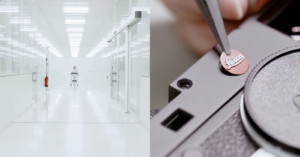
Want to see how Leica's cameras are made these days? Photographer Richard Seymour made this 4-minute video that provides a beautiful look at how the new Leica M10 is built in Wetzlar, Germany.
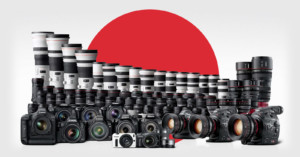
Canon is planning to open a new camera factory in Japan by 2019 in an effort to move more of its production "back home," but this time it will be relying more on automation to lower the cost of domestic operations.
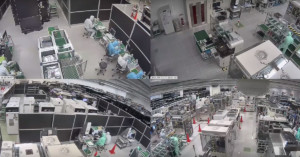
Sony only recently got its sensor business back on its feet after its main factory was heavily damaged by the the 2016 Kumamoto earthquakes in Japan. If you've been curious as to just how badly the Kumamoto plant was hit, check out the 8-minute video above showing the first public footage of the moments of destruction.

The 94-year-old UK-based lighting brand Bowens surprised the photo world last month when it abruptly closed shop and went into liquidation, citing the rise of cheap Chinese brands and fierce competition. The death of a beloved photo brand is (sadly) not too unusual, but former Bowens employees in both the UK and in China say they're furious about how they've been treated during this process.

In the last couple of weeks, my little brand, 3 Legged Thing, launched a brand new Universal L Bracket, the QR11. For the most part, the response has been overwhelmingly positive.
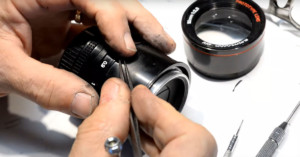
Plenty of photographers these days try their hands at making their own cameras, but Swedish photographer, inventor, and camera maker Mats Wernersson recently did something a little more unusual: he made his own 90mm f/2.8 lens from scratch.
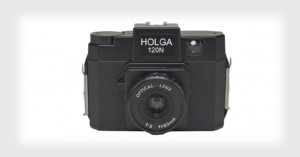
After its launch in the early 1980s, Holga cameras became popular options for people looking to shoot medium format 120 film on the cheap. Production was shut down in late 2015, but now the camera is making a comeback: the classic Holga 120N is coming back this year.
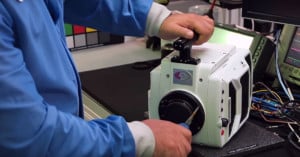
If you ever see an ultra-slow-motion clip online, there's a good chance that it was shot using a Phantom high-speed camera. The 12-minute video above is a behind-the-scenes look at how the cameras -- which cost upwards of $150,000 -- are made.
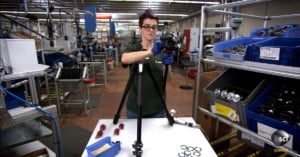
Here's a recent episode from the Science Channel's show How It's Made that shows how modern camera tripods are manufactured. We get a tour of a Manfrotto tripod factory, starting from when aluminum tubes are sliced to specific lengths by precise machines and up through when tubes are joined through custom housings by hand.
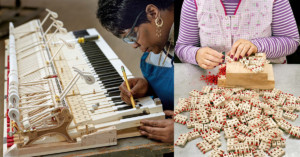
Founded in Manhattan in 1853, Steinway & Sons is widely considered to be one of the greatest piano makers in the world. Its grand pianos grace the world's grandest stages and are played by the best pianists.
Architectural photographer Chris Payne visited the company's factory at One Steinway Place in Astoria, New York, and created beautiful photos that document how raw materials are turned into some of the world's finest musical instruments. His project is titled "Making Steinway: An American Workplace."
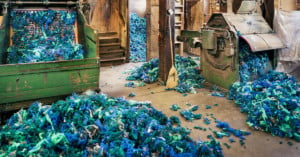
Chris Payne is a architectural photographer who focuses his camera on design, assembly, and the built form. For his latest project, Textiles, Payne visited the color-, shape-, and pattern-filled worlds of textile mills in the American Northeast.
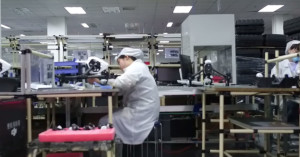
Want to see the inside of a DJI drone manufacturing facility? Now you can, thanks to some test footage that was recently found on a new DJI drone camera. Data is normally wiped before cameras are shipped, but it seems that someone forgot to delete this one.
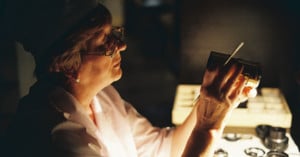
Back in June, Lomography raised nearly $1 million on Kickstarter to launch its new Petzval 58 Bokeh Control lens. It's a lens that takes a classic design and adds a new twist: a bokeh control ring for adjusting the look of out-of-focus areas in your shots.
Today we have some exclusive behind-the-scenes photos of how Lomography's Petzval lenses are manufactured by the skilled optical technicians at the Zenit factory in Russia.
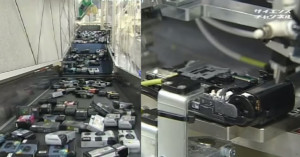
What happens to used disposable cameras once the film has been processed and printed for customers? Well, oftentimes the camera company is able to get its hands on the discarded shell, load it up, and sell it to customers again. If you want to see exactly how this recycling process is/was done, check out the fascinating 15-minute video above, which shows how Fujifilm recycled and reused disposable cameras back in 1998.
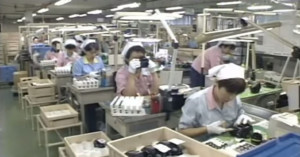
Want to see how Nikon SLR cameras were made two decades ago? Back in 1998, the Japanese TV show "The Making" -- an international predecessor of How It's Made -- aired this 15-minute-long segment showing how Nikon manufactured its F70 film SLR (known as the N70 in the US), which was first introduced in 1994.
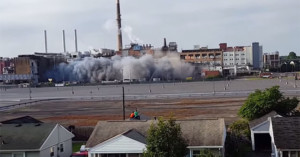
Yesterday marked the end of another piece of Kodak's once-powerful film manufacturing business. The company used 100 pounds of dynamite to take down the 92-year-old Building 53 at Eastman Business Park in Rochester, New York. The sprawling 250,000-square-foot plant, once used to manufacture acetate base for camera film, was reduced to 1,500 tons of steel and concrete in less than 20 seconds.
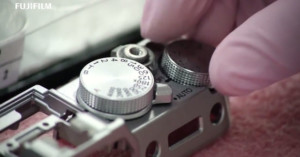
Fujifilm just published this 3-minute-long behind-the-scenes video that offers a glimpse into the manufacturing process for the X-T10 mirrorless camera, which we reviewed recently.
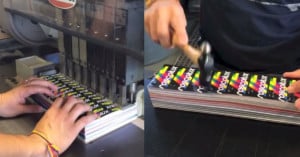
If you’re a fan of both photography and the TV show How It’s Made, here’s a behind-the-scenes video that …
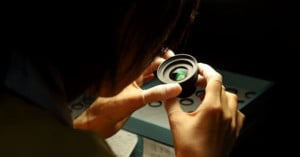
Here's a behind-the-scenes look at how Japanese lens maker Kowa creates its Prominar line of lenses for Micro Four Thirds cameras. The 3-minute "how it's made" video above steps through each of the stages of manufacturing, from designing the lenses on a computer to putting the components together into a final product and testing its optical qualities.
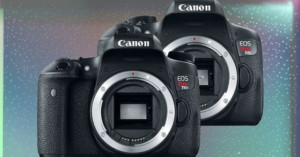
A week ago, it came to light that some Canon T6s and T6si DSLRs were shipping with a strange defect: a large number of tiny white spots can be seen across the surface of the camera sensor, and the spots show up as dark dots in photos taken in certain conditions.
Today Canon has released an official product advisory confirming that this problem exists and promising free repairs for affected customers.
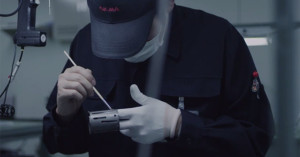
Since 2013, Sigma has been releasing an annual short film that shows how its highly regarded lenses are manufactured in the company's only factory located in Aizu, Japan. The company just released the third video in the series, which documents the daily life of the customer support department in the factory that services equipment for Sigma shooters.

The value of the Japanese yen has tumbled in recent months, and that could mean changes to where Japanese camera companies choose to manufacture their products. Canon is one company that is making changes in response to the changing economic landscape: it says it plans to bring more of its camera manufacturing back to Japan.
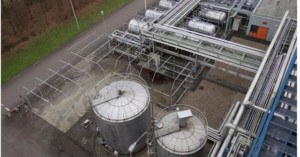
During the glory days of film photography, Fujifilm ran one of its major production facilities in Tilburg, the Netherlands. The plant was founded in 1982 and became one of the biggest manufacturing sites for the company outside of Japan, with nearly 1,000 workers producing film (reportedly up to 200 million rolls per year), photo paper, and other imaging equipment.
In 2006, Fujifilm shut down much of the operations at the plant, and now the company is auctioning off the equipment that has been sitting idle for the past 9 years.

There's something to be said about lens manufacturing. You could even go so far as to say it, in itself, is an art form, with the hands of skilled and methodical workers ever-so-delicately assembling the glass we use to take photos.
Speaking of lens manufacturing, Carl Zeiss Lenses has just posted an short, yet interesting, video behind the manufacturing process of their Touit lens line (for what it's worth, the video is also available in 3D, if you need an added dimension to your viewing experience). These lenses come as 12mm f/2.8 or 32mm f/1.8, and are available for both E-mount and X-mount cameras starting in June.
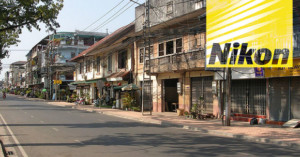
Nikon has announced that it will soon be opening up a new DSLR-making factory in the Southeast Asian country of Laos (officially called Lao People's Democratic Republic).
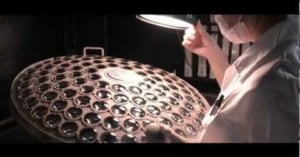
On January 28, Nikon announced the 80th anniversary of the launch of the Nikkor lens brand, and that the total number of lenses manufactured since the beginning has exceeded 75 million units. The lineup now includes more than 80 types of lenses.
To celebrate the occasion, Nikon released the above video, which offers a behind-the-scenes look into how its widely used lenses are made. The video starts from the production of the glass from sand and goes through final assembly, all in three-and-a-half minutes.
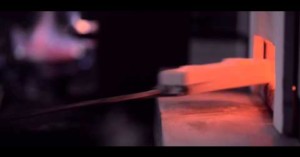
Nikon recently put out this short 3-minute video that offers an interesting glimpse into one of the critical steps of lens making: the production of the optical glass. It steps through the various stages of manufacturing, from combining the raw elements through examining the chunks of glass before they're polished and perfected.
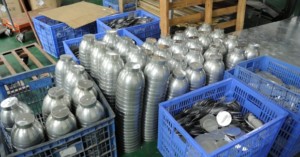
Back in October, we shared some photos taken inside a small Chinese studio lighting maker named NiceFoto. Now we have a look at what operations look like at a much larger manufacturer: Godox. It's reportedly the second largest studio lighting producer in all of China.

Bloomberg published this short feature earlier today titled, "The World's Most Wanted Camera vs. the iPhone Era." In the video, reporter Nejra Cehic takes us on a brief behind-the-scenes tour of Leica's gear manufacturing headquarters in Solms, Germany, and discusses what the future holds for the brand.